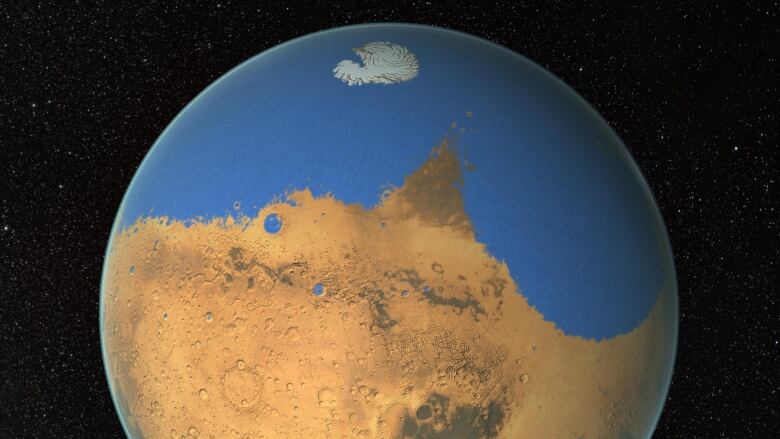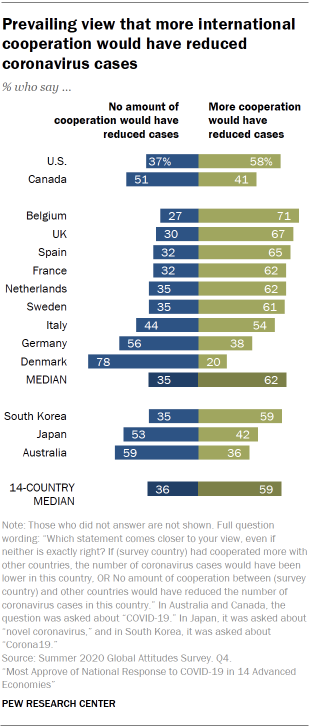GERALT VIA PIXABAY/FUTURISM
A DAY AGO__JON CHRISTIAN__FILED UNDER: OFF WORLD
The Hitcher
Researchers in Japan say that a sample of bacteria managed to survive in the vacuum of space, on the exterior of the International Space Station, for three entire years — raising the possibility that errant organisms could unknowing hitch a ride to Mars on an exploration mission.
“The results suggest that [bacteria] could survive during the travel from Earth to Mars and vice versa, which is several months or years in the shortest orbit,” said Akihiko Yamagishi, a professor of molecular biology at Tokyo University of Pharmacy and Life Sciences who worked on the research, in a press release about the research.
Mars Tho
According to a new paper about the research published in the journal Frontiers in Microbiology, the bacteria in question is called Deinococcus, which tends to form small colonies and is resistant to ultraviolet radiation.
Yamagishi has previously investigated the hearty Deinococcus’ ability to survive miles above the Earth’s surface using balloons and aircraft.
Panspermia
Yamagishi’s research was motivated by the theory of panspermia, which posits that life is capable of spreading through space, perhaps by hitching a ride on meteorites.
“The origin of life on Earth is the biggest mystery of human beings,” Yamagashi said. “Scientists can have totally different points of view on the matter. Some think that life is very rare and happened only once in the Universe, while others think that life can happen on every suitable planet. If panspermia is possible, life must exist much more often than we previously thought.”
READ MORE: Bacteria could survive travel between Earth and Mars when forming aggregates [EurekAlert]
More on panspermia: New Evidence That Life on Earth Could Have Come From Outer Space
Could life have started on Mars before coming to Earth? Possibly, new study suggests
Japanese study tackles hypothesis of panspermia, where life could travel between planets
Nicole Mortillaro · CBC News · Posted: Aug 26, 2020

New research suggests that bacteria could survive in space and could have even come from Mars to Earth. (NASA/GSFC)
How life arose on Earth remains a mystery, though many theories have been proposed. Now a new study by Japanese scientists has reinvigorated the discussion around panspermia: The idea that life may have reached Earth from Mars.
The panspermia hypothesis suggests life may have arisen on another planet, with bacteria travelling through space, hitching a ride on a piece of rock or other means, eventually making its long-distance journey to Earth. Mars is a particularly appealing source, as studies suggest it was once potentially habitable with a large hemispheric ocean.
However, the biggest challenge has been determining if bacteria could survive the harsh interplanetary — or even intragalactic — journey.
To answer that question, a group of Japanese scientists, in participation with the Japanese space agency, JAXA, conducted an experiment on the International Space Station.
In the new study, published Wednesday in the journal Frontiers of Microbiology, researchers found, with some shielding, some bacteria could survive harsh ultraviolet radiation in space for up to 10 years.
Protective shield
For their experiment, the team used Deinococcal bacteria, well-known for tolerating large amounts of radiation. They placed dried aggregates (think of them as a collection of bacteria) varying in thickness (in the sub-millimetre range) in exposure panels outside the space station for one, two and three years beginning in 2015.
Early results in 2017 suggested the top layer of aggregates died but ultimately provided a kind of protective shield for the underlying bacteria that continued to live. Still, it was unclear whether that sub-layer would survive beyond one year.

NASA launches mission to Mars
28 days ago
NASA launched its next-generation Mars rover, Perseverance, which will endeavour to collect samples of Martian soil and rocks during a months-long mission. They will be the first material brought back to earth from another planet and could provide evidence about the possibility of life on Mars. 1:53
The new three-year experiment found they could. Aggregates larger than 0.5 mm all survived below the top layer.
Researchers hypothesized that a colony larger than one millimetre could survive up to eight years in space. If the colony was further shielded by a rock — perhaps ejected after something slammed into a planet such as Mars — its lifespan could extend up to 10 years.
Akihiko Yamagishi, a professor at Tokyo University in the department of pharmacy and life sciences who was principal investigator of the Tanpopo mission designed to test the durability of microorganisms on the ISS, said one of the important findings is that microbes could indeed survive the voyage from Mars to Earth.
"It increases the probability of the process, [making it] much higher," Yamagishi said in an interview.

How life arose on Earth remains a mystery, though many theories have been proposed. Now a new study by Japanese scientists has reinvigorated the discussion around panspermia: The idea that life may have reached Earth from Mars.
The panspermia hypothesis suggests life may have arisen on another planet, with bacteria travelling through space, hitching a ride on a piece of rock or other means, eventually making its long-distance journey to Earth. Mars is a particularly appealing source, as studies suggest it was once potentially habitable with a large hemispheric ocean.
However, the biggest challenge has been determining if bacteria could survive the harsh interplanetary — or even intragalactic — journey.
To answer that question, a group of Japanese scientists, in participation with the Japanese space agency, JAXA, conducted an experiment on the International Space Station.
In the new study, published Wednesday in the journal Frontiers of Microbiology, researchers found, with some shielding, some bacteria could survive harsh ultraviolet radiation in space for up to 10 years.
Protective shield
For their experiment, the team used Deinococcal bacteria, well-known for tolerating large amounts of radiation. They placed dried aggregates (think of them as a collection of bacteria) varying in thickness (in the sub-millimetre range) in exposure panels outside the space station for one, two and three years beginning in 2015.
Early results in 2017 suggested the top layer of aggregates died but ultimately provided a kind of protective shield for the underlying bacteria that continued to live. Still, it was unclear whether that sub-layer would survive beyond one year.

NASA launches mission to Mars
28 days ago
NASA launched its next-generation Mars rover, Perseverance, which will endeavour to collect samples of Martian soil and rocks during a months-long mission. They will be the first material brought back to earth from another planet and could provide evidence about the possibility of life on Mars. 1:53
The new three-year experiment found they could. Aggregates larger than 0.5 mm all survived below the top layer.
Researchers hypothesized that a colony larger than one millimetre could survive up to eight years in space. If the colony was further shielded by a rock — perhaps ejected after something slammed into a planet such as Mars — its lifespan could extend up to 10 years.
Akihiko Yamagishi, a professor at Tokyo University in the department of pharmacy and life sciences who was principal investigator of the Tanpopo mission designed to test the durability of microorganisms on the ISS, said one of the important findings is that microbes could indeed survive the voyage from Mars to Earth.
"It increases the probability of the process, [making it] much higher," Yamagishi said in an interview.

Once life took hold in Earth's oceans, it thrived. (Great Barrier Reef National Park Authority/Reuters)
"Some think that life is very rare and happened only once in the universe, while others think that life can happen on every suitable planet. If panspermia is possible, life must exist much more often than we previously thought."
There are two important factors, he believes: Mars and Earth come relatively close together in their orbits every two years, which would allow time for transfer of bacteria; and the RNA World theory.
The theory hypothesizes that Earth was once composed of self-replicating ribonucleic acids (RNA) before deoxyribonucleic acid (DNA) and other proteins took hold. Yamagishi believes that RNA could have once existed on Mars before conditions for life arose on Earth and potentially travelled towards Earth bringing along RNA which began to seed our planet.
Not 'ironclad proof'
This isn't the first experiment to see whether bacteria could survive in space.
In past experiments, where microbes were mixed with clay, sugar or other elements, the bacteria died. However, this is the most promising finding to date supporting the panspermia hypothesis.
While some research suggests bacteria could survive a trip embedded in rock, this is the first of its kind to suggest they could survive without that kind of aid, what the researchers term "massapanspermia."
However, it's not an open and shut case.
"Actually proving that it could happen is another thing, so I wouldn't say that this is ironclad proof," said Mike Reid, a professor at the University of Toronto's Dunlap Institute for Astronomy and Astrophysics who wasn't involved in the Japanese study. "It's certainly leading in that direction."
Surface of Mars shows scars of glaciers just like Canada's High Arctic: study
It's Alive! Algae Survive 16 Months Exposure To Space
Does Reid believe life could have made its way from Mars to Earth?
"If you'd asked me 20 years ago, I would have said no, of course not. But now, it's a little hard to say," he said. "I think we won't be able to answer that question until we've had a really thorough look at the surface of Mars ... did it ever have life ... and was it like us?"
The answer to that question could come in the form of NASA's Perseverance mission to Mars that launched on July 30. One of the main goals of the state-of-the-art rover is to look for past signs of life on the red planet, taking samples to be returned to Earth at a later date.
While promising, the Japanese research team acknowledged that, while their research strengthens the case for panspermia, other factors need to be considered, such as whether bacteria could survive the descent through Earth's atmosphere.
"Some think that life is very rare and happened only once in the universe, while others think that life can happen on every suitable planet. If panspermia is possible, life must exist much more often than we previously thought."
There are two important factors, he believes: Mars and Earth come relatively close together in their orbits every two years, which would allow time for transfer of bacteria; and the RNA World theory.
The theory hypothesizes that Earth was once composed of self-replicating ribonucleic acids (RNA) before deoxyribonucleic acid (DNA) and other proteins took hold. Yamagishi believes that RNA could have once existed on Mars before conditions for life arose on Earth and potentially travelled towards Earth bringing along RNA which began to seed our planet.
Not 'ironclad proof'
This isn't the first experiment to see whether bacteria could survive in space.
In past experiments, where microbes were mixed with clay, sugar or other elements, the bacteria died. However, this is the most promising finding to date supporting the panspermia hypothesis.
While some research suggests bacteria could survive a trip embedded in rock, this is the first of its kind to suggest they could survive without that kind of aid, what the researchers term "massapanspermia."
However, it's not an open and shut case.
"Actually proving that it could happen is another thing, so I wouldn't say that this is ironclad proof," said Mike Reid, a professor at the University of Toronto's Dunlap Institute for Astronomy and Astrophysics who wasn't involved in the Japanese study. "It's certainly leading in that direction."
Surface of Mars shows scars of glaciers just like Canada's High Arctic: study
It's Alive! Algae Survive 16 Months Exposure To Space
Does Reid believe life could have made its way from Mars to Earth?
"If you'd asked me 20 years ago, I would have said no, of course not. But now, it's a little hard to say," he said. "I think we won't be able to answer that question until we've had a really thorough look at the surface of Mars ... did it ever have life ... and was it like us?"
The answer to that question could come in the form of NASA's Perseverance mission to Mars that launched on July 30. One of the main goals of the state-of-the-art rover is to look for past signs of life on the red planet, taking samples to be returned to Earth at a later date.
While promising, the Japanese research team acknowledged that, while their research strengthens the case for panspermia, other factors need to be considered, such as whether bacteria could survive the descent through Earth's atmosphere.






![Thursday APRIL 13, 2006 Page A19 [How will history remember Ralph?] Sunday APRIL 9, 2006 Page E7 [The ascent and abdication of King Ralph] Calgary-07/12/04-Alberta Premier Ralph Klein held up a paid in full sign after announcing Monday morning that the province's debt of $3.7-billion has been paid off in full ahead of schedule. Klein made the announcement following his annual Stampede breakfast at the McDougall Centre in Calgary. Photo by Colleen De Neve/Calgary Herald (For City story by Tony Seskus And David Heyman) Date published July 13, 2004 Page A1 * Calgary Herald Merlin Archive * ORG XMIT: POS2013031514485344](https://postmediacalgaryherald2.files.wordpress.com/2020/01/a3-01apr-paid-in-full-ag-bw.jpg?quality=100&strip=all&w=564)









